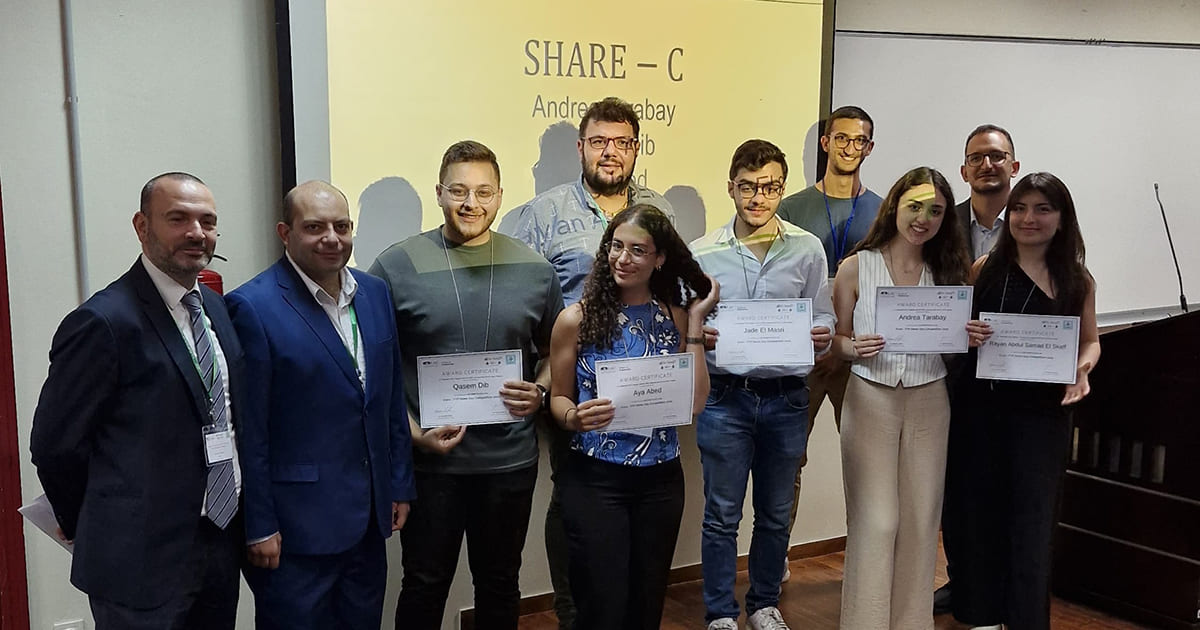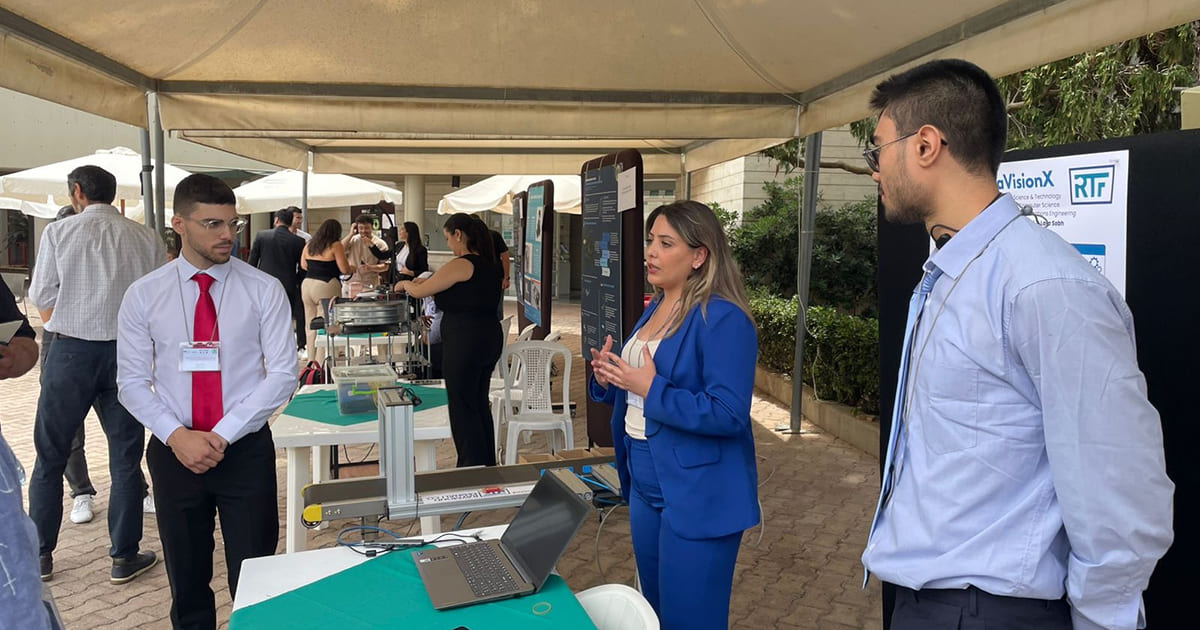The School of Engineering Hosts the Inaugural National Instrumentation Control and Robotics Engineering Competition
Bringing together 17 student teams from seven universities, the event showcased innovative solutions to everyday problems.
Having recently completed their final exams and with their end-of-year projects still on their minds, students from seven universities in Lebanon presented their ideas and prototypes at the inaugural National Instrumentation Control and Robotics Engineering Competition.
Hosted by the LAU School of Engineering (SOE) on the Byblos campus on May 26, the event was co-organized by the recently established Lebanon Chapter of the International Federation of Automatic Control (IFAC) and the Institute of Electrical and Electronics Engineers (IEEE) Joint Control, Robotics and Instrumentation Chapter. Subsequent editions of the competition will be held on a rotational basis across other universities in Lebanon.
Welcoming the students, Dean Michel Khoury commended their hard work in preparing for the competition. “Regardless of whether or not you take home a trophy today, the journey is what will build you up and shape you to become more experienced, resilient engineers,” he said.
IFAC Vice President Roy Abi Zeid Daou spoke about recent competitions and seminars organized by the federation, encouraging the students to take part in upcoming activities and join the chapter’s societies to bolster their professional prospects.
Student groups from LAU, the American University of Beirut (AUB), Université Saint Joseph, Université Saint-Esprit de Kaslik, Sagesse University, American University of Science and Technology and Balamand University split into parallel sessions to give an overview of their projects through oral presentations, followed by poster presentations and demos.
Their ideas tackled a wide range of topics, from challenges in sustainability, cultural preservation, and healthcare, to language barriers and mobility, among others.
The point, explained Assistant Professor Noel Maalouf, who is also the events chair at IFAC, was to embolden young engineers to become more invested in control systems, robotics and instrumentation, rather than be discouraged by their complexity.
“Most of their projects already include some form, or application, of robotics, so we thought that bringing them together for this competition would offer a platform for them to connect, learn from one another and exchange ideas,” he added.
The top winners were announced at the end of the day, with an LAU team of four— comprising computer engineering major Valerie Naufal and Elissa Diab, as well as electrical engineering student Taline Saad and mechatronics engineering major Hassan Tfaily —making the first spot.
Titled “DiaBeat,” their project proposes a non-invasive, continuous glucose monitor with an automated Insulin pump to help diabetic patients manage the disease. Powered by Near-Infrared (NIR) spectroscopy, the device measures glucose concentration without the need for a lancet, while an automated insulin pump delivers the necessary dosage based on the collected vitals through a user-friendly mobile app.
“We believe very strongly in our idea,” said Naufal, noting that the team had already made the shortlist for the Industrial Research Achievements in Lebanon (IRALEB) competition. “It’s not just about securing seed funding, but also about exposure and reachability, as we would like our project to benefit as many diabetic patients as possible,” added Saad.
In second place came an AUB team including Aya Abed, Andrea Tarabay, Qasem Dib, Jade El Masri and Rayan Abdul Samad El Skaff. Their project, titled “Developing Robot SHARE-C’s Full Autonomy,” proposes an assistive robot designed to support medical staff and engage patients while improving infection control and workload distribution.
Another LAU team, made up of mechanical engineering students Maria Mansour, Sayed Tawk, Jad Smia and Jad Ghalloub, took the third spot for their project “SMJ^2 Hexapod,” which are robots inspired by the locomotion of arthropods that can be superior to other robots in stability, adaptability and maneuverability thanks to lightweight materials and advanced control algorithm.



